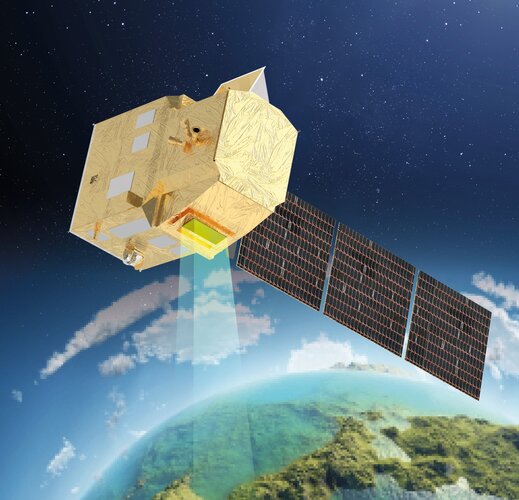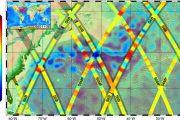
Copernical Team
Kibo Robot Programming Challenge breaks new ground in robotics
 On Sept. 20, 2024, four students experienced the wonder of space exploration at NASA's Johnson Space Center in Houston, taking part in an international competition that brought their work to life aboard the International Space Station.
Now in its fifth year, the Kibo Robot Programming Challenge (Kibo-RPC) continues to push the boundaries of robotics, bringing together the world's brightest
On Sept. 20, 2024, four students experienced the wonder of space exploration at NASA's Johnson Space Center in Houston, taking part in an international competition that brought their work to life aboard the International Space Station.
Now in its fifth year, the Kibo Robot Programming Challenge (Kibo-RPC) continues to push the boundaries of robotics, bringing together the world's brightest Firefly Aerospace secures $175M Series D Funding led by RPM Ventures
 Firefly Aerospace has announced the completion of an oversubscribed $175 million Series D funding round, elevating the company's valuation beyond $2 billion. The funding was led by RPM Ventures, a venture capital firm known for backing innovative and industry-leading enterprises for over two decades. The round also attracted participation from existing backers as well as new investors, such as G
Firefly Aerospace has announced the completion of an oversubscribed $175 million Series D funding round, elevating the company's valuation beyond $2 billion. The funding was led by RPM Ventures, a venture capital firm known for backing innovative and industry-leading enterprises for over two decades. The round also attracted participation from existing backers as well as new investors, such as G Breakthrough in photonic time crystals may transform light control technologies
 An international team of researchers has achieved a significant milestone by designing practical photonic time crystals-unique materials capable of exponentially amplifying light. This advancement paves the way for new opportunities in fields such as communications, imaging, and sensing, promising faster and more compact optical devices, including lasers and sensors.
"This work could lead
An international team of researchers has achieved a significant milestone by designing practical photonic time crystals-unique materials capable of exponentially amplifying light. This advancement paves the way for new opportunities in fields such as communications, imaging, and sensing, promising faster and more compact optical devices, including lasers and sensors.
"This work could lead Millennium spacecraft readies for key NASA TRACERS mission tests
 Millennium Space Systems, a Boeing (NYSE: BA) subsidiary, has successfully completed two spacecraft for NASA's TRACERS (Tandem Reconnection and Cusp Electrodynamics Reconnaissance Satellites) mission, aimed at studying the interaction between solar wind and Earth's magnetic field.
"TRACERS will ultimately inform how we understand space weather," said Dave Machuga, CEO of Millennium Space S
Millennium Space Systems, a Boeing (NYSE: BA) subsidiary, has successfully completed two spacecraft for NASA's TRACERS (Tandem Reconnection and Cusp Electrodynamics Reconnaissance Satellites) mission, aimed at studying the interaction between solar wind and Earth's magnetic field.
"TRACERS will ultimately inform how we understand space weather," said Dave Machuga, CEO of Millennium Space S Sidus Space chosen to build Lunar Data Storage Spacecraft for Lonestar
 Sidus Space (NASDAQ: SIDU) has been appointed to design and construct the initial fleet of Data Storage Spacecraft for Lonestar, a premier provider of data storage and Resiliency As A Service (RAAS). With this selection, Sidus becomes Lonestar's exclusive satellite manufacturing partner for a series of six spacecraft intended for lunar orbit. These satellites will deliver sophisticated data stor
Sidus Space (NASDAQ: SIDU) has been appointed to design and construct the initial fleet of Data Storage Spacecraft for Lonestar, a premier provider of data storage and Resiliency As A Service (RAAS). With this selection, Sidus becomes Lonestar's exclusive satellite manufacturing partner for a series of six spacecraft intended for lunar orbit. These satellites will deliver sophisticated data stor Peculiar Pale Pebbles
 During its recent exploration of the crater rim, Perseverance diverted to explore a strange, scattered field of bright white rocks which sparked the interest of the team scientists.
Perseverance has been climbing up the steep slopes of the Jezero crater rim for over two months now, and ever since approaching the edge of the crater has been spying increasingly diverse and strange-looking ro
During its recent exploration of the crater rim, Perseverance diverted to explore a strange, scattered field of bright white rocks which sparked the interest of the team scientists.
Perseverance has been climbing up the steep slopes of the Jezero crater rim for over two months now, and ever since approaching the edge of the crater has been spying increasingly diverse and strange-looking ro Extreme heat weakens land’s power to absorb carbon

A new European Space Agency-backed study shows that the extreme heatwaves of 2023, which fuelled huge wildfires and severe droughts, also undermined the land’s capacity to soak up atmospheric carbon. This diminished carbon uptake drove atmospheric carbon dioxide levels to new highs, intensifying concerns about accelerating climate change.
Ariane 6 upper stage visits ESA's temple of boom
This request seems a bit unusual, so we need to confirm that you're human. Please press and hold the button until it turns completely green. Thank you for your cooperation!
Press and hold the button
If you believe this is an error, please contact our support team.
185.132.36.159 : 2d3a01c3-a4db-4227-9e0e-80460832
CHIME given the shakes

A model of the CHIME instrument has recently undergone rigorous testing to confirm it can endure the stresses of launch and the harsh conditions of space. This new Copernicus mission will provide critical data to support sustainable agriculture, and more.
N. Korea jams GPS signals, affecting ships, aircraft in South
 North Korea staged GPS jamming attacks on Friday and Saturday, an operation that was affecting several ships and dozens of civilian aircraft in South Korea, Seoul's military said.
The jamming allegations come about a week after the North test-fired what it said was its most advanced and powerful solid-fuel ICBM missile, its first such launch since being accused of sending soldiers to help Ru
North Korea staged GPS jamming attacks on Friday and Saturday, an operation that was affecting several ships and dozens of civilian aircraft in South Korea, Seoul's military said.
The jamming allegations come about a week after the North test-fired what it said was its most advanced and powerful solid-fuel ICBM missile, its first such launch since being accused of sending soldiers to help Ru 




























